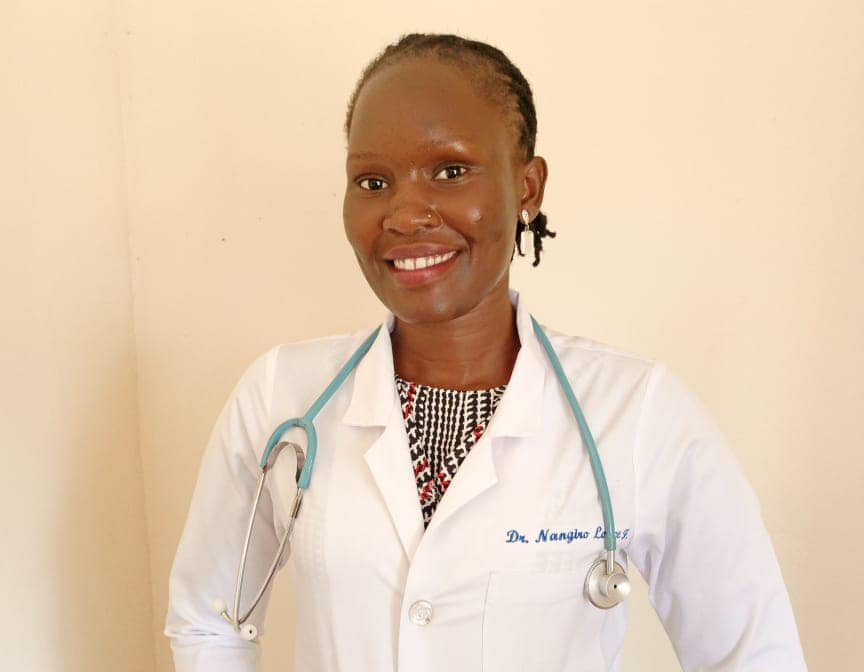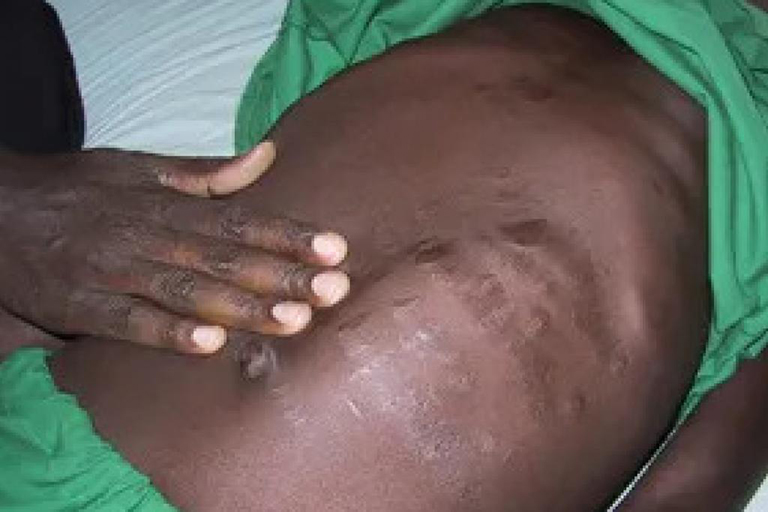How Uganda’s vulnerable suffer in silence against visceral leishmaniasis
Uganda has pledged to eliminate VL as a public-health problem by 2030 under World Health Organisation (WHO) guidelines, aiming to detect at least 85% of cases and treat 95% of them.
Priscilla Chebjira, the lead nurse at Amudat clinic, with a colleague, give Kalazar patients their shots at 5am each day. (Courtesy)
_________________
When 12-year-old Agnes Lopeta arrived at Karamoja region-based Amudat Hospital, she was too weak to stand or walk. Nurses gently lifted her from her mother’s back and placed her on a bed as her half-open eyes struggled to follow the ceiling light.
For weeks, her tiny body had been overtaken by persistent fever, weight loss and a stomach that swelled so quickly it terrified her family, her mother told New Vision Online.
In Pokot county's Lopedot village, some neighbours believe that Lopeta had been bewitched, much as the community has seen similar cases of a certain disease locally called Termes, which doctors call Visceral Leishmaniasis. Her mother, Faith Amany, knew she was losing her daughter.
“Twice, they said it was malaria. She stopped eating, she couldn’t walk, and her stomach kept swelling. People said maybe it was witchcraft. I didn’t know what to believe because I had seen some people in the same state,” Amany told New Vision Online.
Eight days into treatment, Lopeta is slowly regaining strength but must stay for two more weeks to complete the full medication course.
Visceral leishmaniasis (VL), commonly known as kala-azar, has become a silent predator in parts of Karamoja. Fatal in over 95% of untreated cases, the disease presents with irregular fever, weight loss, anaemia and swelling of the spleen and liver. Yet in hard-to-reach districts like Amudat, it is often mistaken for malaria, typhoid or witchcraft until it is almost too late.
Uganda has pledged to eliminate VL as a public-health problem by 2030 under World Health Organisation (WHO) guidelines, aiming to detect at least 85% of cases and treat 95% of them. But while national targets focus on numbers and timelines, frontline health workers in Karamoja describe a reality far removed from the conference halls in Kampala.
Children most affected
Dr Loyce Faith Nangiro, a clinician at Amudat General Hospital, has witnessed the disease’s cruelty for years.
Dr Loyce Faith Nangiro, a clinician at Amudat General Hospital. (Courtesy)
“Most of the patients we see are children under 15. By the time they reach us, they are severely malnourished, weak and in pain. Families first treat malaria, then typhoid, then try herbs, and by the time they arrive here, the disease has already advanced,” she says.
Treatment is not only urgent but also intense. Patients require painful daily injections for 17 to 21 days. The second-line treatment is reserved for complicated cases and is administered intravenously over ten days, according to Nangiro.
“These drugs are strong and very painful. Children cry through the injections, but it is the only way to save them.” Dr Nangiro says.
Amudat records between 150 to 300 VL cases annually, about 30 to 50 patients each month and children bear the brunt of the burden. Most remain hospitalised for up to three weeks, a difficult period for caregivers in a region already struggling with poverty, hunger and long distances between settlements. Families lose weeks of income, and children fall behind in school. Malnutrition among young patients is common.
Compounding these challenges is the seasonal nature of the disease. During the rainy season, when malaria cases peak, VL symptoms often blend in, delaying diagnosis. This overlap fuels the cycle of misdiagnosis in remote health centres with limited laboratory capacity.
To counter this, Amudat relies on community surveillance teams to search for cases across the district. But the semi-nomadic lifestyle of many households makes follow-up difficult.
“Being a mobile community, we mostly lose them to follow-up. We also lack psychosocial support services that these families desperately need,” Nangiro said.
"While many cases progress over several months to two years, acute forms can be fatal in as little as 3-4 months, particularly in young children," she added.
These gaps widened further after US-supported health programmes, long the backbone of Uganda’s NTD surveillance, diagnostics and community outreach, faced funding cuts.
A child with leishmaniasis. (Courtesy).
Nangiro says they are currently depending on The END Fund programs to combat neglected tropical diseases (NTDs) through integrated treatment programs that include distributing drugs, training health workers, and providing education.
Health minister Dr Jane Ruth Aceng told Parliament in March 2025 that Uganda lost shillings 604 billion due to these reductions, including 780 million specifically for NTDs. While treatment continues, frontline districts have felt the strain through shortages of test kits, interrupted outreach and delayed reporting.
Dr Patrick Sagaki, the superintendent of Amudat hospital, who studied and treated VL since 2007. He describes kala-azar as a disease rooted in inequality.
“It affects only the poorest of the poor. Most of our patients are Pokot herders and other pastoralists from northern Kenya. They live in remote places with no roads, no public transport, and very limited health services. Identifying cases requires active searches, which are extremely costly. Without partners, we would never reach most of them,” he explained.
He said the tiny insects that transmit the parasite thrive in the dry, arid conditions that stretch across Karamoja and northern Kenya. This harsh environment, combined with poor housing, close proximity between humans and animals, long distances to health facilities and low disease awareness, creates the perfect breeding ground for VL.
He noted that much as things have improved, but not enough, a lack of awareness of the nature and severity of the illness amongst Pokot communities means that it can still take months for patients to receive the correct diagnosis.
Dr Daniel Kyabayinze, a senior official in Uganda’s Neglected Tropical Diseases programme, says the country remains committed to its elimination goal but acknowledges persistent challenges.
“Uganda has made progress in training health workers, expanding treatment and improving diagnostics. But VL is concentrated in hard-to-reach regions with limited infrastructure. When external funding was reduced, these areas felt it first but when we integrated health services, care of all NTDs is now accessible to all patients and we are now back on track to triple elimination,” he said.
He noted that achieving the 2030 target will require stronger domestic financing, vector control interventions, increased community awareness and prioritisation of hotspot districts like Amudat.
“VL is a silent disease. When we don’t look for it, we miss it. And when we miss it, we lose lives,” he warned.
The World Health Organisation reports that East Africa now carries the highest number of VL cases globally. Poverty, malnutrition, HIV co-infection and population movements all increase risk, while timely diagnosis and effective treatment remain the only means of preventing death and disability.
In Uganda, Amudat District has the highest prevalence rates, with an average of 139 cases per 100,000 population. A 2025 study in Moroto district found a 5.21% prevalence rate, with Matheniko County having the highest infection rate within the district (6.90%).
VL is among the top neglected tropical diseases that Uganda is currently battling with, with an elimination target of 2030.